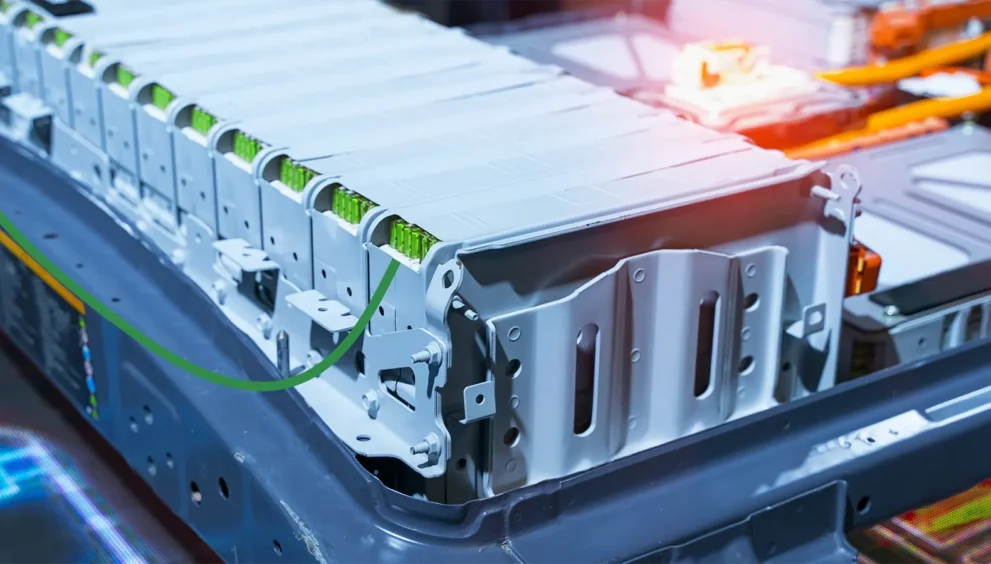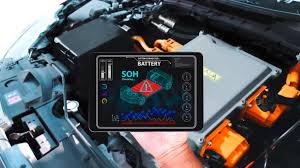Solid-State Batteries: The Future of EVs – Everything You Need to Know Now

Solid-State Batteries: The Future of EVs – Everything You Need to Know
Electric vehicles have come a long way, but one critical component remains a bottleneck: the battery. While lithium-ion batteries have powered the EV revolution, they’re approaching their theoretical limits. Enter solid-state batteries – a next-gen battery tech that promises to solve many of the current limitations plaguing electric vehicles today.

What Are Solid-State Batteries?
Solid-state batteries represent a fundamental shift in battery design. Unlike conventional lithium-ion batteries that use liquid electrolytes to facilitate ion movement between the anode and cathode, solid-state batteries employ solid electrolytes made from materials like ceramics, polymers, or glass.
This seemingly simple change in electrolyte composition creates a cascade of improvements. In traditional batteries, the liquid electrolyte requires separators to prevent short circuits and contains flammable organic solvents. Solid-state batteries eliminate these components, replacing them with a solid material that conducts ions while maintaining structural integrity.
The solid electrolyte acts as both the medium for ion transport and the separator between electrodes. This design allows for thinner battery construction and opens up possibilities for new electrode materials that weren’t compatible with liquid electrolytes.

Revolutionary Benefits Over Lithium-Ion Technology
Enhanced Safety Profile
Safety represents the most compelling advantage of solid-state batteries. Traditional lithium-ion batteries pose fire and explosion risks due to their flammable liquid electrolytes. When damaged or overheated, these batteries can experience thermal runaway – a dangerous chain reaction that generates intense heat and toxic gases.
Solid-state batteries eliminate this risk entirely. The solid electrolyte is non-flammable and chemically stable, making thermal runaway virtually impossible. This enhanced safety profile could eliminate the need for complex cooling systems and protective housing in EVs, reducing weight and cost while improving reliability.
Superior Energy Density
Energy density – the amount of energy stored per unit weight or volume – is crucial for EV performance. Solid-state batteries can achieve energy densities of 400-500 Wh/kg, compared to 250-300 Wh/kg for current lithium-ion batteries. This improvement translates directly to longer driving ranges without increasing battery weight or size.
The higher energy density stems from the ability to use lithium metal anodes, which store significantly more energy than the graphite anodes in conventional batteries. Solid electrolytes prevent the formation of dangerous lithium dendrites that would cause short circuits in liquid electrolyte systems.

Faster Charging Capabilities
Charging speed represents another major breakthrough. Solid-state batteries can potentially charge from 10% to 80% capacity in just 10-15 minutes, compared to 30-60 minutes for current fast-charging lithium-ion batteries. This improvement comes from better ion conductivity in solid electrolytes and reduced resistance at electrode interfaces.
Faster charging addresses one of consumers’ primary concerns about EV adoption – range anxiety and charging convenience. With solid-state batteries, EVs could match the refueling speed of gasoline vehicles.
Extended Lifespan
Solid-state batteries also promise exceptional longevity. While lithium-ion batteries typically degrade after 1,000-2,000 charge cycles, solid-state batteries could maintain performance for 10,000 cycles or more. This durability means EV batteries could last the entire vehicle lifetime without replacement, significantly reducing total ownership costs.
Current Challenges Facing Mass Adoption
Despite their promise, solid-state batteries face significant hurdles before reaching widespread commercialization.
Manufacturing Costs
Production costs remain the primary barrier. Solid-state batteries currently cost 3-5 times more than lithium-ion batteries to manufacture. The solid electrolyte materials are expensive, and the manufacturing processes require precise temperature and pressure control. Creating defect-free solid electrolyte layers at scale presents significant technical challenges.
The interface between solid components also requires advanced manufacturing techniques to ensure proper ion conduction. Any gaps or imperfections can dramatically reduce battery performance, demanding extremely high manufacturing precision.
Production Scalability
Scaling production from laboratory prototypes to millions of batteries annually represents another major challenge. Current manufacturing processes are slow and complex, involving high-temperature sintering and specialized equipment. Automotive applications require batteries that can be produced quickly and reliably at massive scales.
The industry needs to develop new manufacturing techniques that can produce solid-state batteries cost-effectively while maintaining quality and performance standards. This transition requires substantial investment in new production facilities and equipment.
Technical Obstacles
Several technical issues still need resolution. Solid electrolytes have lower ionic conductivity than liquid electrolytes at room temperature, potentially affecting performance in cold weather. The solid-solid interfaces between components can develop resistance over time, gradually degrading performance.
Mechanical stress during charging and discharging can also cause cracking in solid electrolytes, creating pathways for dendrite formation and potential failure. Researchers are working on more flexible solid electrolyte materials and improved cell designs to address these issues.

Major Players Leading the Revolution
Toyota
Toyota has invested heavily in solid-state battery technology for over a decade and holds numerous patents in the field. The company plans to introduce solid-state batteries in hybrid vehicles by 2025, followed by full battery electric vehicles by 2030. Toyota’s approach focuses on sulfide-based solid electrolytes and has demonstrated prototypes with impressive performance metrics.
QuantumScape
QuantumScape, backed by Volkswagen, has developed ceramic solid electrolytes that promise to solve many technical challenges. Their batteries demonstrated 15-minute charging to 80% capacity and retained over 80% capacity after 800 charge cycles in testing. The company aims to begin commercial production in the mid-2020s.
Samsung
Samsung’s research division has made significant breakthroughs in solid-state battery technology, including demonstrating batteries with 500+ mile range capability. Their silver-carbon composite anodes have shown promising results in prototype testing, and Samsung is working with automotive partners to commercialize the technology.
Other notable players include Solid Power (partnered with BMW and Ford), LG Energy Solution, and CATL, all racing to bring solid-state batteries to market.
Timeline for Mass Market Adoption
The future of EV batteries is approaching faster than many anticipate. Early solid-state batteries will likely appear in premium vehicles and limited applications by 2025-2027. These first-generation products will be expensive but will demonstrate the technology’s capabilities.
Mass market adoption is expected between 2030-2035, as manufacturing costs decrease and production scales up. During this period, solid-state batteries should reach cost parity with lithium-ion batteries while offering superior performance.
By 2040, solid-state batteries could dominate the EV market, enabling electric vehicles with 600+ mile ranges, 10-minute charging times, and 20+ year battery lifespans. This transformation will accelerate EV adoption and make electric transportation truly competitive with internal combustion engines in all aspects.
The transition to solid-state batteries represents more than just an incremental improvement – it’s a paradigm shift that will reshape the entire automotive industry and accelerate our move toward sustainable transportation.






















































































































































































































































































































